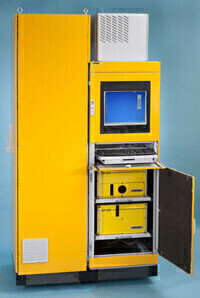Air Monitoring
Best Available Techniques for Emissions Monitoring
Jul 25 2012
Firms in the UK’s waste sector are proactively seeking Best Available Techniques for emissions monitoring, according to Enviro Technology (UK).
Over recent months there has been a surge in demand for sophisticated equipment, such as monitors of total gaseous mercury. The air quality and emissions monitoring specialist believes that a combination of factors, such as the recast Industrial Emissions Directive (IED) and new national standards surrounding stack emissions in the US, are driving the trend.
Anthropogenic mercury emissions – typically associated with coal or lignite-fired combustion plants - are widely recognised as a serious pollutant. Mercury has been linked to brain and nervous system defects, and its vapour can stay in the atmosphere for up to a year before combining with soil and entering the food chain.
Enviro Technology supplies an MCERTS-certified Opsis DOAS Continuous Emissions Monitoring System (CEMS) that recently received TUV approval for measuring total gaseous mercury. The equipment involves a non-contact method of measurement, using an optical path.
This innovative solution overcomes problems traditionally associated with measurement of mercury emissions. Extractive CEMS struggle to provide accurate total gaseous mercury measurements due to issues surrounding chemical reactions and contamination in the sampling system.
Enviro Technology believes that industry leaders are starting to consider the lifetime value of emissions monitoring equipment, and seeking to future-proof their investment as much as possible. For instance, they are opting for equipment that is capable of lower levels of detection than is currently required by law, so that they have room to manoeuvre if things change. Factors such as the new emissions standards set by the US Environmental Protection Agency and the IED’s shift towards Best Available Techniques are playing a role in the decision making process.
Jim Budd, UK CEMS Sales Manager for Enviro Technology, says: “Emissions limits are becoming ever tighter, and the waste sector understands that it is sensible to invest in the best equipment available. Naturally this makes sense from an environmental perspective, but it is also more economically sound when you consider the lifetime value of equipment. A cheaper system might seem more cost-effective upfront, but any savings are quickly lost if the equipment has higher running costs or a shorter replacement cycle.”
The Opsis DOAS Total Gaseous Mercury system is a non-contact monitoring solution that measures mercury vapour using an optical path. In addition to total gaseous mercury, it can measure all gases listed in the Industrial Emissions Directive, including: NOx, SO2, CO, CO2, NH3, HF and HCl. Its cost of ownership is lower than extractive systems, due to reduced maintenance and calibration requirements, easy operation and low energy consumption.
Digital Edition
AET 28.2 April/May 2024
May 2024
Business News - Teledyne Marine expands with the acquisition of Valeport - Signal partners with gas analysis experts in Korea Air Monitoring - Continuous Fine Particulate Emission Monitor...
View all digital editions
Events
Jul 30 2024 Jakarta, Indonesia
China Energy Summit & Exhibition
Jul 31 2024 Beijing, China
2024 Beijing International Coal & Mining Exhibition
Aug 07 2024 Beijing, China
IWA World Water Congress & Exhibition
Aug 11 2024 Toronto, Canada
Aug 25 2024 Stockholm, Sweden and online









.jpg)








